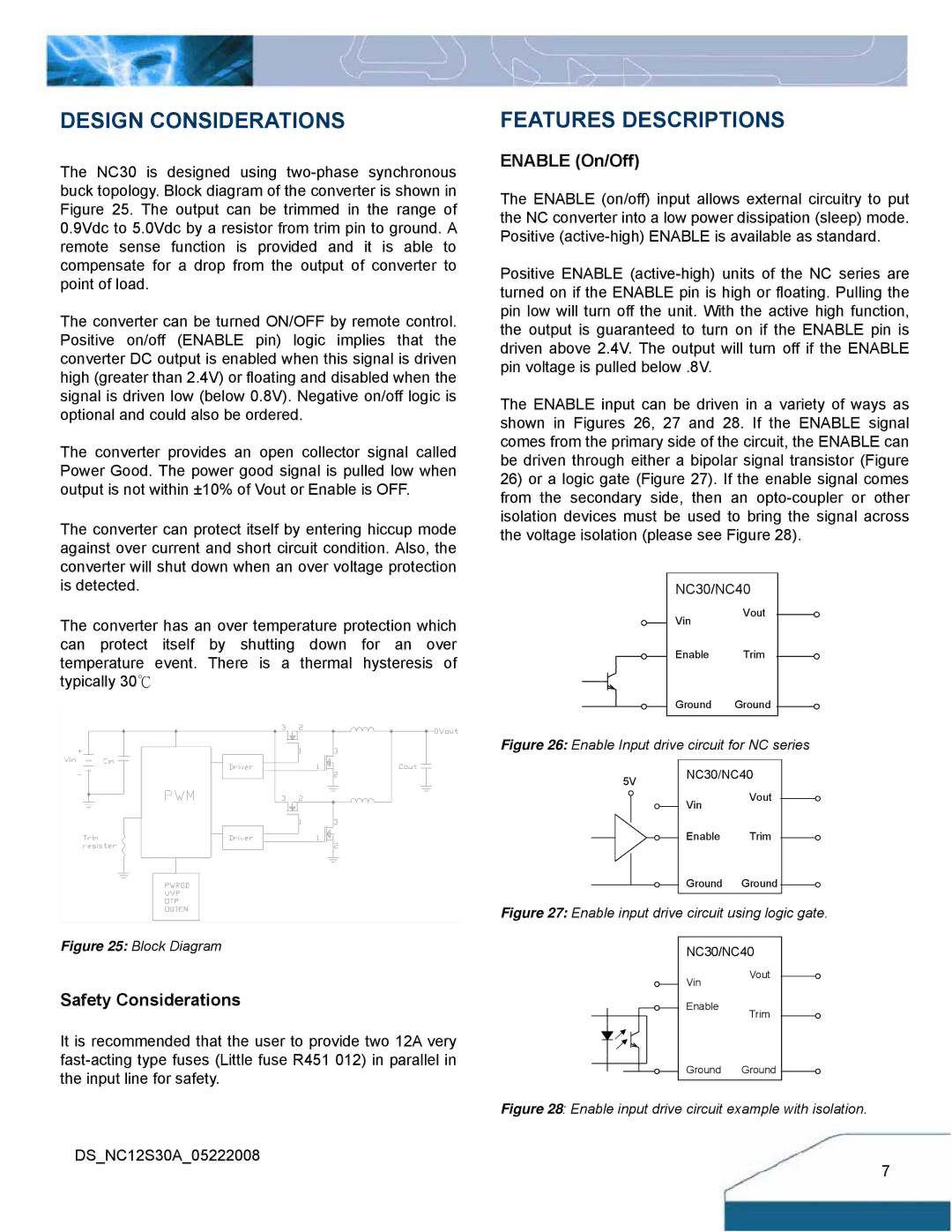NC30 specifications
Delta Electronics NC30: A Comprehensive OverviewDelta Electronics is renowned for its innovative solutions in power management and automation. One of the standout products in their extensive lineup is the NC30, which has garnered attention for its advanced features and robust performance. Designed for a variety of applications, the NC30 is particularly valued in sectors such as industrial, manufacturing, and energy efficiency.
At its core, the NC30 is a state-of-the-art controller that excels in managing and optimizing energy use. One of its primary features is its integrated energy management system, which enables real-time monitoring and analysis of energy consumption. This capability allows users to identify inefficiencies and implement corrective measures, ultimately reducing operational costs.
In terms of connectivity, the NC30 is equipped with versatile communication protocols, facilitating seamless integration with existing systems. It supports various industrial communication standards, including Modbus, Ethernet/IP, and CANopen. This connectivity not only enhances interoperability but also allows for remote monitoring and control, a feature that is becoming increasingly essential in today’s smart factories.
The NC30 also boasts an intuitive user interface, which simplifies configuration and operation. Its graphical display provides clear insights into system performance and energy metrics, enabling users to make informed decisions quickly. Additionally, the device supports multiple language options, catering to a global audience and enhancing usability across different regions.
Another remarkable characteristic of the NC30 is its scalability. Whether deployed in a small facility or a large industrial plant, the NC30 can adapt to various scales of operation. This flexibility makes it an ideal choice for businesses looking to future-proof their investments as technologies evolve and operational demands change.
The NC30 is further enhanced by Delta's commitment to sustainability. The controller is designed to optimize energy efficiency, not only helping businesses save on costs but also contributing to environmental conservation efforts. With growing emphasis on energy-efficient practices, the NC30 helps organizations align with green initiatives and regulatory requirements.
In summary, the Delta Electronics NC30 is a powerful, versatile, and user-friendly controller that excels in energy management. Its advanced features, including real-time monitoring, communication capabilities, and scalability, make it a valuable asset for any organization aiming to enhance operational efficiency and sustainability. As industries continue to evolve, tools like the NC30 will undoubtedly play a vital role in shaping the future of energy management and automation.

